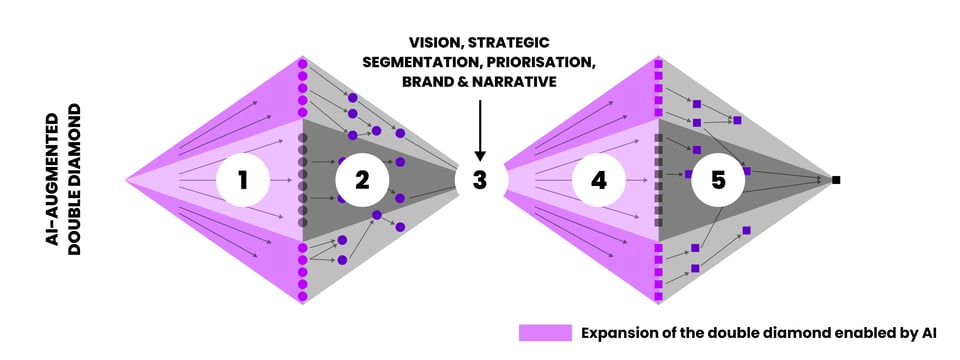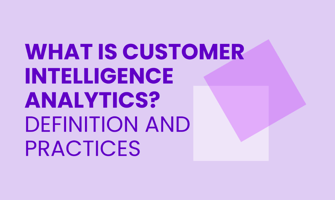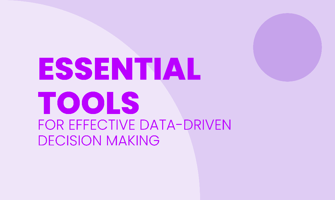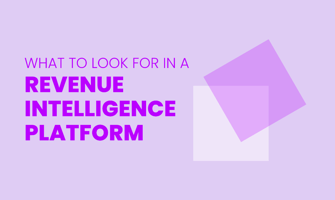B2B companies are under constant pressure to hit targets, grow revenue, and hold on to customers...
Next Generation Intelligence - AI-augmented Double Diamond
In the past decade, the amount of data that companies have captured has exploded. The tools that companies are using are continuously generating more data. Data-related businesses delivering possibilities to leverage external data have also grown tremendously, and the new leap in making data actionable is about connecting internal and external data effectively and crafting intelligence from it with algorithms.
The approach easily described with the Double Diamond Framework (figure below). It was popularized by the design community in the mid-2000s (Design Council, 2022). The idea builds on the works of Guilford (1956), who is generally attributed with making the distinction between divergent and convergent thinking.
The innovation process consists of a sequence of steps where innovators first explore a wide range of problems and opportunities to then decide on adequate solutions (source).
This same process has been used for the purpose of making a creative strategy by many, including Ogilvy. In this case, we are using it to make a strategic discovery for strategy design and for the deployment and management of change:

There are five stages involved in applying this framework to AI.
Stage 1
This stage involves aggregating the company's own data and relevant external data, which is about enablement of the analysis. The idea is to use unusually large bottom-up and outside-in dataset to lay the foundation, which will extend the double diamond AI-enabled insight and priority generation in the next stages.
Stage 2
This stage uses algorithms to make sense of tens of millions of rows of raw data. From this, we disxover where the money comes from, which offering and segment-related dynamics are involved, and the insights and priorities can we recognize. Furthermore, it allows for the discovery of readiness drivers to adopt new offerings (market segmenting by addressable, obtainable and active markets), how customers map in to current and potential value segments, etc.
In Stage 2, the primary goal is to discover what matters (the drivers of risks and opportunities) and where the money is. We need to get behind the KPIs to reveal dynamics and phenomena that drive change and results. Once recognized, we can measure and manage them.
Stage 3
The third stage is about defining direction, vision, brand and narrative. It gives the foundation for strategic development programs and deployment planning. Strategy is a domain of management consideration and decision making. The usual use cases would be eg. creation of strategic segmentation, making portfolio analysis, and creation of strategy and implementation planning.
Stage 4
This stage involves preparing for deployment, defining teams and team objectives, and deciding their key results. Each team has access to data that is relevant for their objectives. They have tools to make goals into key results, as well as the capability to analyze the underlying challenges and dynamics that they should concentrate on. The idea is that the objectives of the programs are firmly built on bottom-up data, which enable us to give tools and answers for planning. If we require strong growth, we need to give tools to meet them. 180ops has been built to give those answers.
Stage 5
Learning and doing. Transparency and shared learning is imperative for continuous improvement and the cumulative development of competitive advantage. The markets and customers change continuously. 180opos monitors those changes and gives feedback for that an more, such as changes in customers willingness to buy or relationship- or offering-related risks.
Adaptability to the changing environment is a must, and early signals about changes are imperative. That is why outside-in data has a vital role. Getting advice at the individual customer level supports sales very effectively. Creating unity between offering, marketing, sales and customer service bring the entire customer interface together. Offerings, customer segments and activities interconnect while transparency and feedback inspire, empower, and energize the organization. The goal is to drive cultural unity and purpose, winning as a team.
The new discoveries and magic are available from combinations:

Understanding Outside-In Logic
Outside-in logic is about leveraging customer and market need status data. Many decisions related to customer needs and timing are caused by changes in a customer’s situation. These changes can include:
- Turnover or profitability shifts
- M&A activities
- Technology adoption
- Operational changes
- Leadership changes (e.g., a new CEO or strategy)
This data is available both at the individual company level and at the macroeconomic level. Changes in the business environment impact customers' choices and timing. Key data sources include:
- Debt interest rate fluctuations
- Gross domestic product trends
- Employment shifts
- Market confidence changes
Our role at 180ops is to provide tools that help analyze these shifts and show how businesses can leverage them.
Credit Ratings as External Data
A great example of external data is credit ratings, which have a long history in risk management. Originally, they were used to determine pricing and assess which companies were safe to serve.
However, time series analysis of credit rating changes can reveal new insights. A shift in credit rating can signal positive demand for certain offerings or negative demand for others. These changes serve as indicators of evolving company needs. The key is to uncover these underlying signals, using them to guide targeting and timing for higher impact.
Offerings and Market Life Cycles
Offerings exist at different life cycle stages. This can be assessed with both internal and external data:
- Internal data shows whether an offering is growing, stable, or declining. If an offering is in decline—with no new sales and customers reducing investments—its potential is low.
- External data provides insights into how competitors and the broader market are performing in the same offering category.
Motive-Based Segmentation: B2B vs. B2C
In B2C markets, motive- and attitude-based segmentations have been studied and sometimes work well for targeting. The difficulty in B2C markets is about connecting people and data. There is no data on individual customers’ motives available, at least internationally, and legislation regulates consumer data. This analysis is much more practical because the motives have their foundation in data that can be analyzed and quantified, so motive-based segmenting more applicable in B2B than in B2C.
The Speed of External Data
External data sources vary in speed:
- Financial data: Often more than a year old
- Credit ratings: Can change multiple times a year
- Other data sources: Some update in near real-time
The key opportunity is curating external data that provides the most value when combined with internal data. Since this data is focused on companies and markets, it is not subject to GDPR and other privacy laws—making it richer and easier to manage compared to consumer data.
Learn more:
What is Commercial Management Operating System?
Why AI + machine learning + Strategic Segmentation = Productivity
Boost your productivity with RevOps
How to allocate resources by current value and potential
How to segment markets by urgency: Addressable, Obtainable and Active Markets





